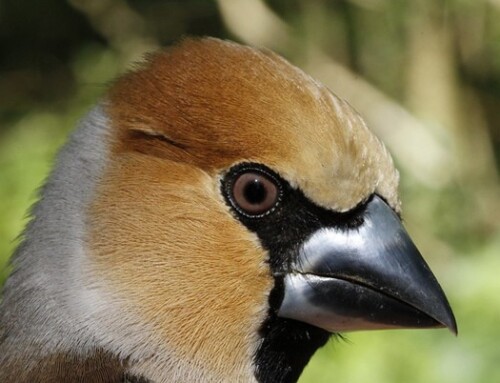LINKED PAPER
A new, undescribed species of Melanocharis berrypecker from western New Guinea and the evolutionary history of the family Melanocharitidae. Milá, B., Bruxaux, J., Friis, G., Sam, K., Ashari, H. & Thébaud, C. 2021 IBIS. DOI: 10.1111/ibi.12981 VIEW
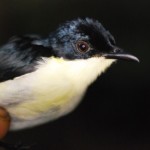 Few places on Earth remain as underexplored as the highlands of New Guinea, and the diversity and evolutionary history of its fauna and flora are still poorly known. With colleagues Christophe Thébaud (Université Paul Sabatier, Toulouse, France) and Hidayat Ashari (Museum Zoologicum Bogoriense, Cibinong, Indonesia), we joined a biological expedition to the Lengguru region of the Bird’s Neck, in Western Papua, Indonesian New Guinea, in 2014. After sampling birds in different localities, mostly at low elevations, we reached the mid elevations of the Kumawa Mountains, in the Bomberai Peninsula, a remote mountain range only explored previously by ornithologists Jared Diamond and David Bishop during short visits in 1983 and 2013.
Few places on Earth remain as underexplored as the highlands of New Guinea, and the diversity and evolutionary history of its fauna and flora are still poorly known. With colleagues Christophe Thébaud (Université Paul Sabatier, Toulouse, France) and Hidayat Ashari (Museum Zoologicum Bogoriense, Cibinong, Indonesia), we joined a biological expedition to the Lengguru region of the Bird’s Neck, in Western Papua, Indonesian New Guinea, in 2014. After sampling birds in different localities, mostly at low elevations, we reached the mid elevations of the Kumawa Mountains, in the Bomberai Peninsula, a remote mountain range only explored previously by ornithologists Jared Diamond and David Bishop during short visits in 1983 and 2013.
In the last day of our stay, at an elevation of 1200 m in moist cloud forest (Fig. 1), we captured in our nets a male berrypecker that we immediately realized was an undescribed new member of the genus Melanocharis. It was a thrilling, memorable moment, and one that made us feel like nineteenth-century explorers indeed. Compared to other taxonomic groups, relatively few bird species are left to be discovered, as shown by the fact that this is only the second species to be described in New Guinea in the last 80 years.
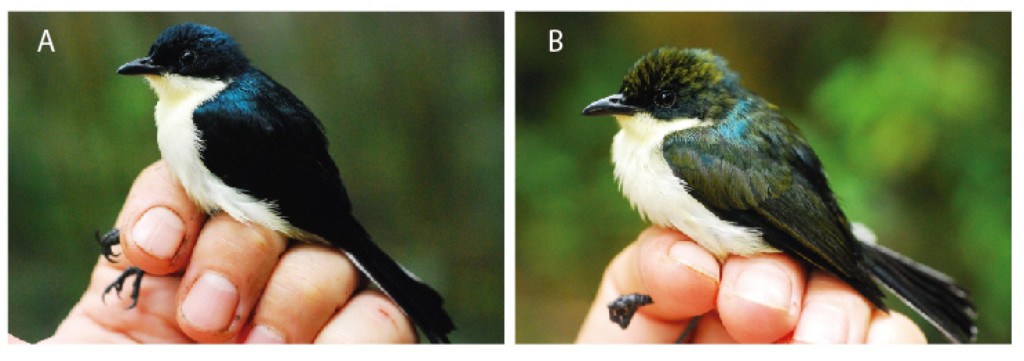 Figure 1 Adult (A) and immature (B) Satin Berrypecker males. © Borja Milá
Figure 1 Adult (A) and immature (B) Satin Berrypecker males. © Borja Milá
To further explore the area and obtain additional specimens of the new berrypecker, we returned to the Kumawas for a longer expedition in October 2017. Access to the Kumawas is made very difficult by their steep terrain, lack of trails, and absence of surface water, which seeps through its porous bedrock. So this time we brought equipment to collect rain water and properly organized food supply, which allowed our team to stay above 1000 m for 22 days. During this second expedition we captured three more males of the new Melanocharis berrypecker, two of them immature (Fig. 2), but we were not able to capture or see any females. The male’s song also remains a mystery.
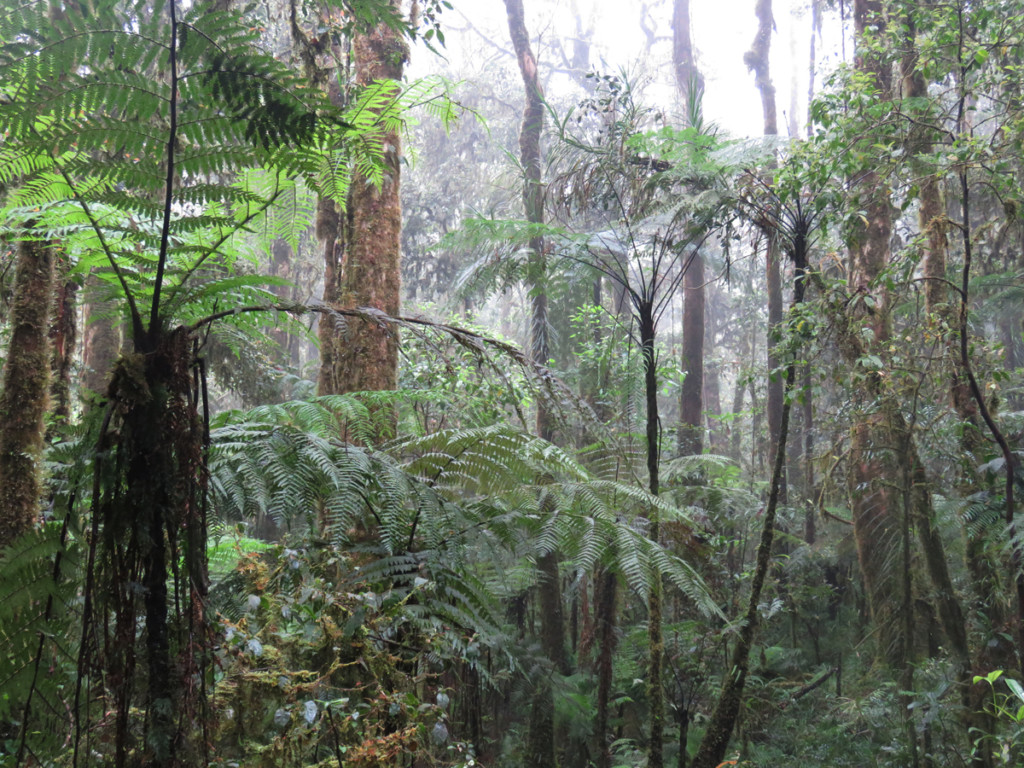 Figure 2 Cloud forest at 1200 m in the Kumawa mountains, where the new species of berrypecker was found. © Borja Milá
Figure 2 Cloud forest at 1200 m in the Kumawa mountains, where the new species of berrypecker was found. © Borja Milá
Back in the lab, inspection of other Melanocharis specimens at the MZB and extensive phylogenetic analyses based on genomic data obtained from the new species and its relatives, confirmed that the Kumawa specimens represent a new, previously undescribed species, which we have named Satin Berrypecker Melanocharis citreola in reference to its silky-white underparts washed lemon yellow. In order to place the new species within the family Melanocharitidae, which includes berrypeckers and longbills, we generated a phylogeny using genome-wide data. And to our surprise, the phylogeny revealed a new striking fact: the Satin Berrypecker is not a close relative of the Mid-mountain Berrypecker Melanocharis longicauda as we originally thought based on plumage traits and altitude, but instead is sister to the Streaked Berrypecker Melanocharis striativentris, which is mostly green and lacks sexual dimorphism (Fig. 3).
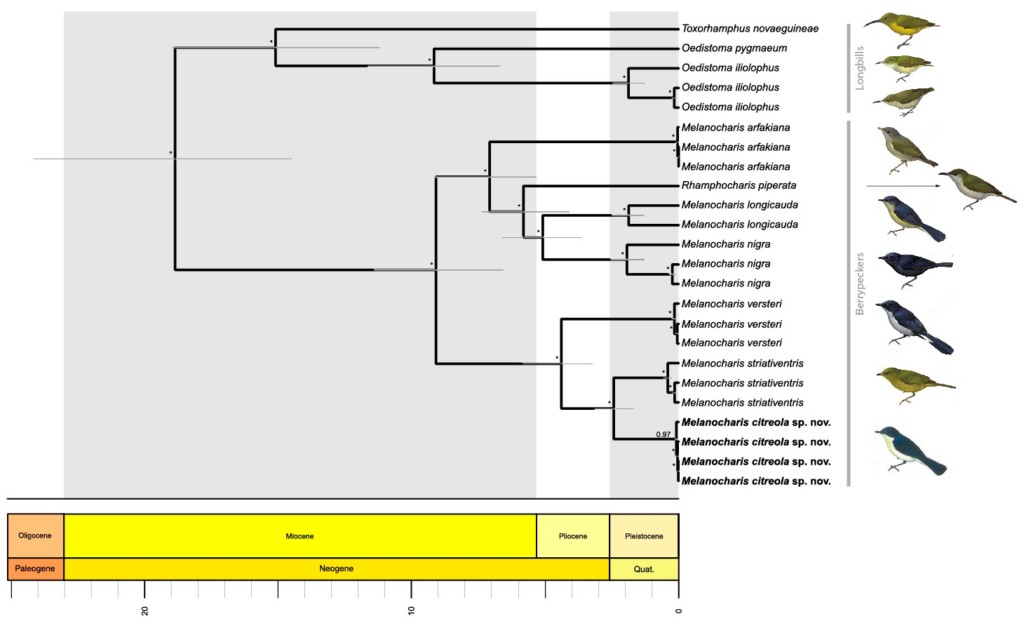 Figure 3 Dated phylogenetic tree of the family Melanocharitidae based on mitochondrial DNA data. Genome-wide data produced the same topology (see full article). Asterisks correspond to a Bayesian posterior probability of 1.0. Nodes correspond to the mean age, with 95% Highest Probability Density (HPD) values shown as grey bars.
Figure 3 Dated phylogenetic tree of the family Melanocharitidae based on mitochondrial DNA data. Genome-wide data produced the same topology (see full article). Asterisks correspond to a Bayesian posterior probability of 1.0. Nodes correspond to the mean age, with 95% Highest Probability Density (HPD) values shown as grey bars.
Much remains to be learned about the ecology of this species and its relatives, and we plan to return to New Guinea to continue gathering data. This work was made possible by help from collaborators Jade Bruxaux, who conducted the phylogenomic analyses, Guillermo Friis, who contributed genetic data, and Katerina Sam, who contributed samples from other berrypecker species. Fieldwork was supported by the Lengguru Project (www.lengguru.org) conducted by the French Institut de Recherche pour le Développement (IRD), the Indonesian Institute of Sciences (LIPI) and several other institutions (please see the Acknowledgements section in the full article).
Image credit
Top right: Adult male Satin Berrypecker Melanocharis citreola © Borja Milá




